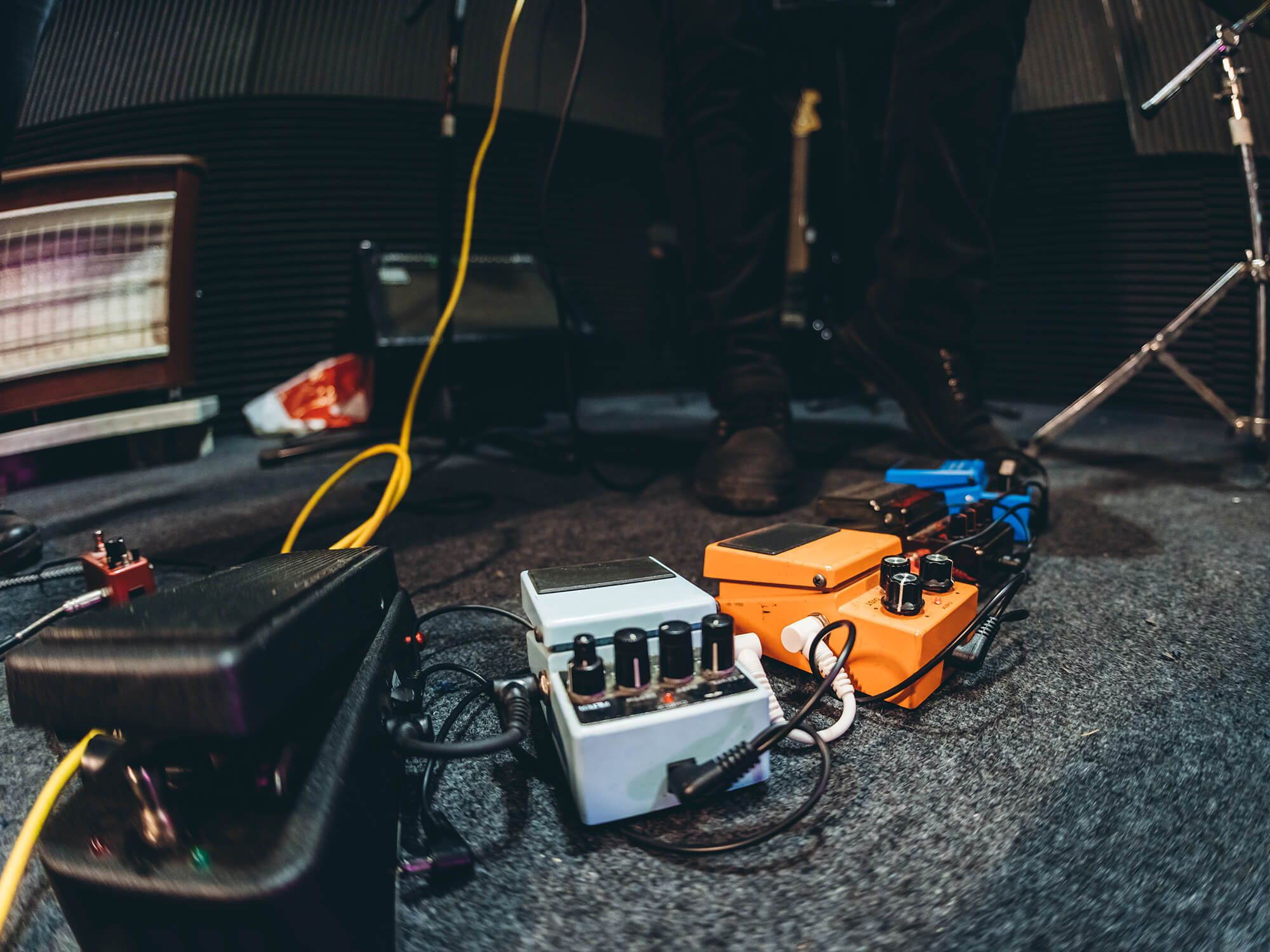Cause & Effects: Compression – is it for guitarists or producers?
Why compression as an effect is generally wonderful when used sparingly and effectively.

Image: urbazon/Getty Images
If there is one effect pedal that annoys producers and steps on their toes, it’s the pedal compressor. Studio compression is typically applied lightly by producers to meet the production goals of the track recorded and to help it sit in the mix better. But what is guitar pedal compression?
Compression is a production technique that can be used by producers or guitarists to control the dynamics (the range between the lowest volume parts and the highest volume parts) of their guitar signal. A compressor automatically reduces the volume of the guitar signal when it exceeds a user set threshold and as the signal drops below that threshold the volume gradually increases.
Typically, it’s a subtle effect but it offers consistency in levels and I like to treat it as a “more better” pedal giving your playing a more even tonality that is reminiscent of years of extra skill.

How to use guitar compression as an effect in your rig
- The first trick of compression is to enhance your guitar’s sustain. This is achieved by reducing the initial notes attack and allowing the sustained parts of the held note to come through more. This is particularly useful for guitarists who want to achieve long sustain for solos but with gobs of gain on the signal.
- As mentioned above, Compressors can be used for dynamic range control. making softer notes louder and louder notes quieter. This can help guitarists achieve a more consistent level of volume, which for genres like funk or country can be vital.
- Compression, although not a method of EQ’ing your guitar can affect the tone through alteration of the attack, sustain, and release of the notes. Having a faster attack time can emphasise the brighter initial transient, while a slower attack time can smooth this out giving the appearance a tone control has been wound on.
- Stacking compression with other guitar effects means you can achieve unique tonal possibilities. For example, when used before a light overdrive pedal, compression can help control the level of drive preventing the pedal from overloading, this results in a more controlled and articulate overdriven sound.
- To act as a limiter, compression can be used as a “limiting” tool to tame the peaks of a guitar signal that may be too loud or causing distortion. By reducing the peaks, compression can reduce signal clipping and keep the guitar signal within a desired level, no matter how excited the guitar player gets during a solo.

What do the controls on a compressor mean?
- Threshold/limit: This controls the limit, beyond which the compressor begins to reduce the signal amplitude.
- Ratio: This controls how much compression is applied to the signal. Specifically how much the output level is reduced in relation to the input level. For example, a 4:1 ratio means that for every 4 dB of input level above the threshold, the output level will be reduced by 1 dB.
- Attack: This controls the speed of the compressor in acting to reduce the input signal level. A fast attack time will move faster to prevent unwanted peaks in signal. Conversely a slower attack time will allow more of your initial note to pass through before the initial transient of the guitar sound to pass through before the compression kicks in.
- Release: This controls how long it takes for the compressor to stop reducing the volume after the input signal falls below the threshold. A shorter release time will result in quicker recovery to the original volume, while a longer release time will result in a more sustain.
- Volume/Output: This allows you to increase the overall output volume after the compression is applied so that you can restore the overall level of the guitar signal to match the original level or desired output level.
- Tone/EQ Controls: Some guitar pedal compressors (like the Fat General) have tone or EQ controls that allow for shaping the frequency response of the compressed signal. This cis great to restore some sparkle to your compressed signal once compression has been applied.
- Blend/Mix: A blend or mix control allows you to blend the compressed signal with the uncompressed signal. This can be helpful in retaining some of the natural dynamics of the guitar while still achieving sustaining notes.

So given how versatile some guitar compressors can be, it’s clear why they are important to certain genres such as country, funk, rock and even pop. But why do producers often detest guitarists using them?
Well in all honesty it’s mostly because studios apply the compression effect with a view to how the guitar sits in the mix of the whole track. Studio compressors are typically much more powerful than a normal guitar compressor pedal. That coupled with the increased noise floor many pedal compressors add to the signal and it’s easy to see why producers prefer to retain control of that element of a guitar’s signal chain.
That being said, compression as an effect is generally wonderful when used sparingly and effectively to enhance your tone. Used live, at home or in the studio you can’t go wrong with the “more better” pedal.
